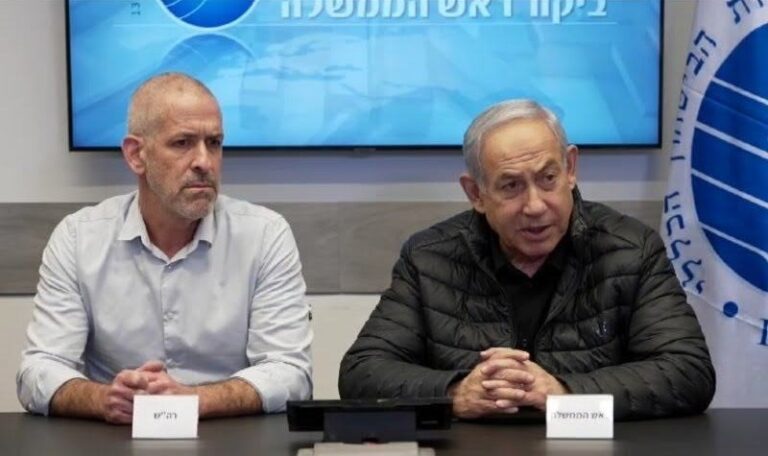The safety record at the U.S. laboratory that created the atomic bomb is facing intensifying criticism as work ramps up to produce a key component for the nation’s nuclear weapons cache.
A series published this week by the Center for Public Integrity cites numerous internal reports and other documents outlining federal regulators’ concerns about safety lapses at Los Alamos National Laboratory over the years, including spilled plutonium and workers positioning plutonium rods in a way that could have been disastrous.
In an internal memo obtained by The Associated Press, Los Alamos officials took aim at critics and reassured employees of the safety of the lab’s facility for making plutonium cores used to trigger the explosions in nuclear bombs.
“As employees, you should be proud of your laboratory’s accomplishments over the past decade to strengthen our ability to operate safely and securely,” according to the memo, dated Monday. “While there will often be external organizations and individuals which advance a misleading narrative, it is not an accurate reflection of our work.”
It said the plutonium facility’s operations and safety programs have successfully undergone more than a dozen independent external reviews and that it’s close to being fully operational after safety problems forced work to be suspended in 2013.
Safety at the nation’s aging nuclear research labs is under scrutiny as federal officials grapple with issues that have been decades in the making. Aside from Los Alamos, U.S. Energy Department officials recently said inadequate funding and the inability to clean up millions of gallons of toxic waste at the Hanford Nuclear Reservation in Washington state will likely lead to future accidental radiation releases.
The probe of Los Alamos by the nonprofit journalism organization caught the attention of top officials at the National Nuclear Security Administration, which oversees the lab, and members of New Mexico’s congressional delegation, who say safety should be the top priority given the lab’s role in maintaining and modernizing the U.S nuclear stockpile.
“There have been acknowledged mistakes that this report shines a light on that must be addressed,” U.S. Sen. Martin Heinrich, a New Mexico Democrat, said in an email to the AP.
The birthplace of the atomic bomb, Los Alamos has struggled for years to address management and oversight issues along with more recent safety concerns about the handling of radioactive waste and plutonium.
Members of an independent federal oversight panel confirmed during a public hearing earlier this month that many of the alarm and fire suppression systems at the plutonium facility date to the 1970s, raising questions about the ability of the decades-old concrete building to accommodate the increase in plutonium pit production ordered by the Energy Department.
The Center for Public Integrity also pointed to a June 2016 incident in which technicians spilled several tablespoons of liquid containing plutonium, sopped it up with organic cheesecloth and threw away the cloth in waste bins with other nuclear materials.
Federal rules prohibit using cheesecloth in such cleanups because contact with plutonium can trigger chemical reactions and fires.
The center also uncovered details about a 2011 incident in which lab technicians placed eight rods of plutonium side by side for a photograph, which could have caused the material to spark a nuclear chain reaction. Keeping bits of plutonium far apart is a cardinal rule for nuclear scientists.
Another chemical reaction stemming from Los Alamos inappropriately packaging a barrel of radioactive waste caused a 2014 radiation leak at the government’s only underground nuclear waste repository.
That misstep resulted in costly recovery work and a backlog in the multibillion-dollar program for cleaning up waste from decades of research and bomb-making.
The company managing the lab is losing its contract next year in part because of the history of safety lapses, Sen. Tom Udall’s office said Tuesday. Spokeswoman Jennifer Talhelm said Udall sees the contracting process as a chance to make improvements at the lab, which she called an invaluable research center.
“It’s also true that Los Alamos has the top scientists and researchers in the world, as well as infrastructure, decades of history and experience with no parallel anywhere, period,” Talhelm said.
Frank Klotz, head of the National Nuclear Security Administration, reiterated in a statement this week that safety is paramount and that his agency withheld more than $82 million in contractor payments over safety and operational issues between 2013 and 2016.
Still, agency officials have acknowledged that more trained engineers are needed in the plutonium facility to ensure problems are not repeated.
Watchdog groups have long complained about a sense of arrogance by lab management. They say recent reports show that federal and congressional oversight must be intensified.
“The lab seems to spend a lot of energy fighting back against the advice of external experts,” said Greg Mello, director of the Los Alamos Study Group. “If they only spent as much attention on fixing the problems as they do on fighting back, it would be a big help.”
(AP)











